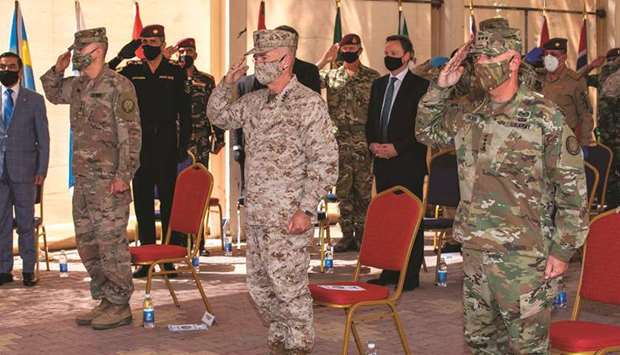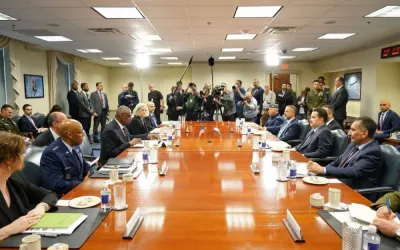The US announced a sharp cut yesterday to troop numbers in Iraq, as President Donald Trump seeks to honour his pledge to halt the country’s “endless wars” overseas, with just two months to go until the election.
The move, reducing the Pentagon’s footprint in Iraq from 5,200 military personnel to just 3,000, and an expected parallel announcement on Afghanistan, comes as Trump strives to cast himself as a peacemaker as he fights an uphill battle to stay in power.
General Kenneth McKenzie, the head of the US military’s Central Command, said during an event in Baghdad that the decision was “due to our confidence in the Iraqi security forces’ increased ability to operate independently.”
That would take the US presence there to its lowest level since Trump’s predecessor Barack Obama cut troops to a token force in 2012 in a previous attempt to end the then nine-year-old war.
But Obama was forced to reverse course by the rise of the Islamic State group (IS), raising the number of troops inside Iraq back over 5,000 as part of an international coalition to combat the militants.
Trump has already made some cuts in Iraq, pulling troops back to US bases in the Gulf region over the past year as they faced rocket attacks by armed groups.
But, fighting for re-election against Democrat Joe Biden, he has sought to honour his repeated pledge during the 2016 campaign to end US wars abroad and bring back servicemen.
“We kept America out of new wars and we’re bringing our troops back home, we’re bringing them back home from all these faraway places,” Trump said in a campaign speech in Winston-Salem, North Carolina on Tuesday.
“We’ve spent hundreds of billions of dollars, and what do we get out of it?” he said, adding: “Biden voted for the Iraq war.”
McKenzie said the US could continue supporting the Iraqi military in its fight against IS, but said the “ultimate goal” was an Iraq where local forces can by themselves prevent the extremists from returning.
Trump has also pushed hard to pull back US forces from Afghanistan, where they rose to more than 12,000 under his watch to pressure the Taliban and IS.
The number fell to about 8,600 in July following the February peace accord with the Taliban and McKenzie has said they could all be gone by May 2021 if the Taliban and the Afghan government reach their own agreement.
But Trump’s pressure on the Pentagon to more quickly disengage in the Middle East and Afghanistan has strained relations between the White House and US defence chiefs.
Former defence secretary Jim Mattis quit in December 2018 after Trump declared all US troops would leave Syria.
Under Mattis’ successor Mark Esper, the Pentagon has remained wary of hasty withdrawals, cautious that the Taliban would overwhelm Afghan government forces if the US pulls out too quickly.
Trump believes pushing ahead with withdrawals could boost his standing among voters fed up with continuing US involvement in conflicts that began after the September 11, 2001 attacks on the United States by Al Qaeda.
But support for Trump has also been eroded by disdainful remarks he has made towards the military.
Last week the Atlantic magazine reported that in 2018 Trump referred to US Marines buried in a World War I cemetery in France as “losers” and “suckers” for getting killed in action.
The White House has denied the comments, but the reporter cited multiple first-hand sources, and has been backed up by other publications.
Then on Sunday Trump suggested that the Pentagon leadership supports wars to keep defence contractors in business.
“I’m not saying the military is in love with me; the soldiers are,” Trump said at the White House.

This US Department of Defence photo shows Combined Joint Task Force-Operation Inherent Resolve, the military organisation to defeat IS in Iraq and Syria, hold a change of command ceremony in Baghdad yesterday, as Lt Gen Paul Calvert (right), Gen Kenneth F McKenzie (centre), and Lt Gen Pat White (left), salute at the event to welcome Gen Calvert as the new CJTF-OIR commander.


